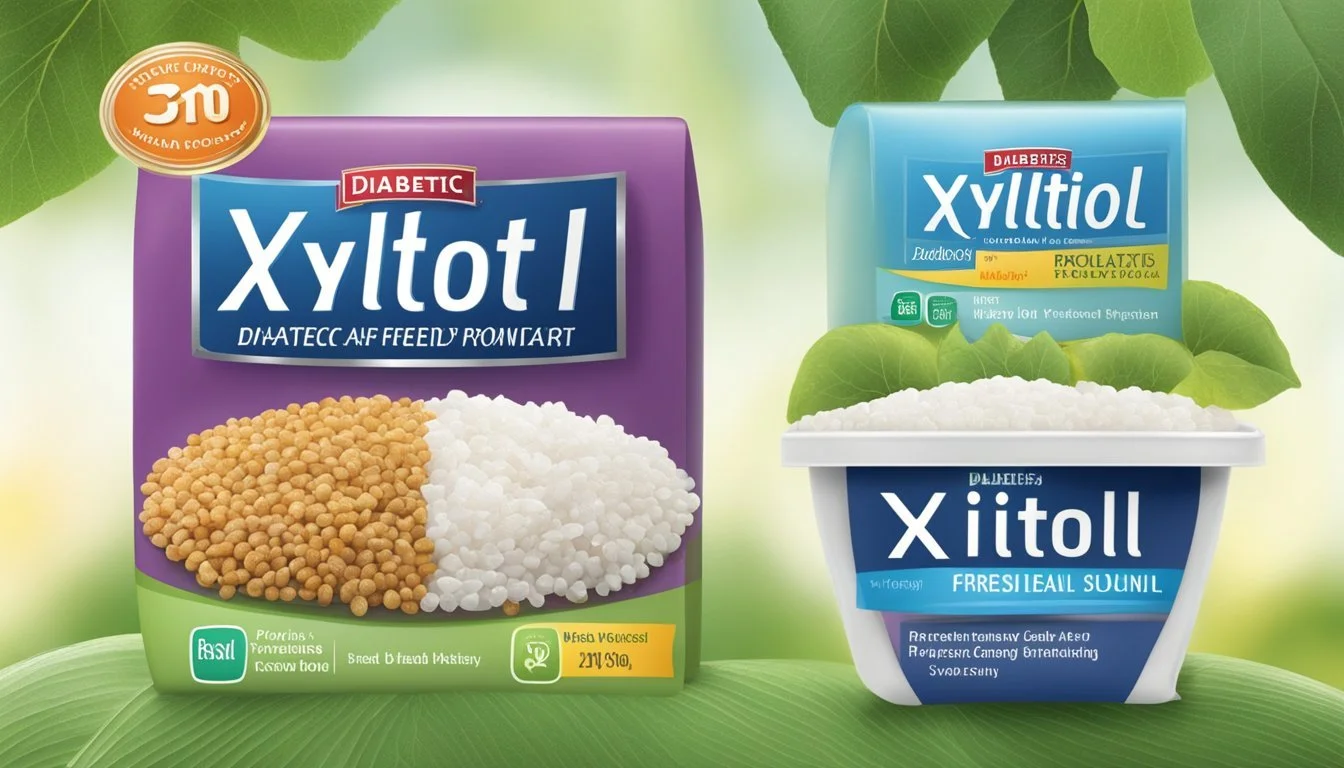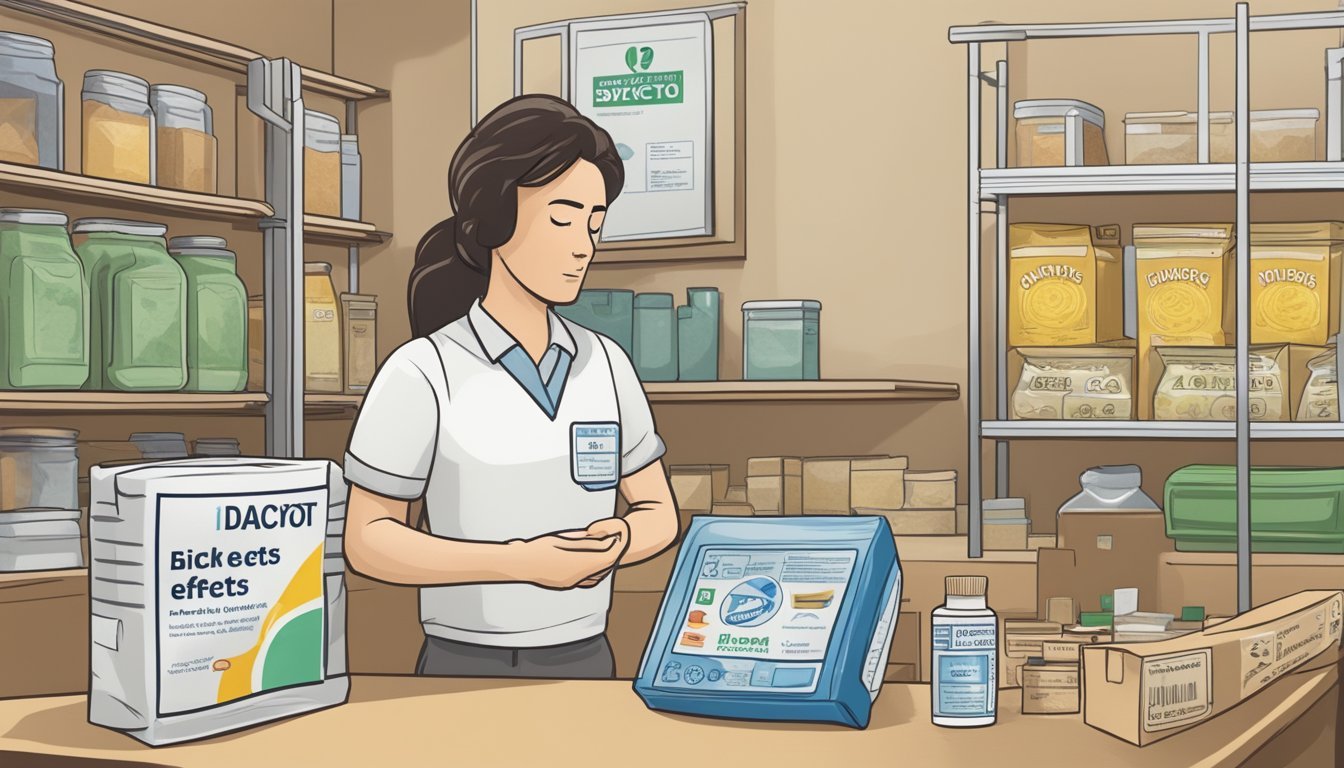Can Diabetics Eat Birch Sugar (Xylitol)?
Exploring the Options
Birch sugar, also known as xylitol, often raises questions among diabetics looking to manage their sugar intake. As a sugar alcohol derived from natural sources like birch trees and corncobs, xylitol presents a compelling alternative to conventional sugar. Xylitol is safe for diabetics due to its low impact on blood glucose levels and lower calorie content compared to regular sugar, making it a popular choice in sugar-free products, including chewing gums, mints, and diabetes-friendly foods.
While xylitol does contain carbohydrates, its chemical structure allows for slower absorption in the body, resulting in a minimal increase in blood sugar levels. This characteristic benefits diabetics, as it helps maintain better control over glucose spikes. Additionally, its tooth-friendly properties and similarity in sweetness to sugar add to its appeal as a sugar substitute.
However, it is essential for diabetics to recognize that xylitol is not entirely free of calories or carbohydrates. Moderation remains key, and consulting with a healthcare provider can help ensure xylitol fits appropriately into one's dietary plan. With these insights, diabetics can better navigate their sweetener choices and make informed decisions about incorporating xylitol into their diet.
Understanding Xylitol
Xylitol is a natural sweetener often used as an alternative to sugar. This sugar alcohol, derived from plants, offers various potential health benefits and is commonly found in many products.
What Is Xylitol?
Xylitol is classified as a sugar alcohol, a type of carbohydrate that mirrors the sweetness of sugar but with fewer calories. Structurally, it’s different from typical sugar as it contains fewer carbon atoms, which leads to lower caloric content.
Medically, xylitol is known for its low glycemic index, which measures its impact on blood glucose levels. With a glycemic index of about 7, compared to sugar's 60, xylitol causes a much slower rise in blood glucose levels. This makes it a potential sweetener for individuals managing diabetes.
Sources of Xylitol
Xylitol is primarily derived from two natural sources: birch trees and corncobs. Extraction processes from these sources ensure that it remains a naturally occurring substance.
Birch trees have traditionally been the primary source, especially in Europe. More recently, due to its abundant supply and lower cost, corncobs have become a common source for xylitol production. Xylitol can be found in everyday products such as sugar-free gums, candies, mints, and even some diabetic-friendly foods and oral care items, capitalizing on its sweetening power and potential health benefits.
Xylitol as a Sugar Substitute
Xylitol is a popular sugar substitute primarily due to its low caloric content and compatibility with various diets. It is commonly used in products like chewing gum, candies, and oral-care items.
Comparison to Other Sweeteners
Xylitol is a sugar alcohol, derived from plants like birch and corn. Unlike sucrose (table sugar), which has 4 calories per gram, xylitol contains only 2.4 calories per gram.
Stevia is another popular sweetener, derived from the stevia plant. It is much sweeter than sugar but has zero calories. Erythritol, similar to xylitol, provides 0.24 calories per gram. Although erythritol is less sweet compared to xylitol, it is often favored because it has fewer gastrointestinal side effects.
Artificial sweeteners like aspartame and sugar alcohols such as sorbitol and maltitol are also commonly used. Aspartame has zero calories but can have a bitter aftertaste. Sorbitol and maltitol have higher caloric content compared to xylitol and may cause digestive issues when consumed in large amounts.
Caloric Content of Xylitol
Xylitol is marketed as a low-caloric sweetener. It contains 40% fewer calories than sucrose, making it an attractive option for those looking to reduce calorie intake without sacrificing sweetness.
When compared to other sweeteners, xylitol offers a middle ground. It isn't entirely sugar-free, but it has a lower calorie count than most natural sugars. Stevia, another low-calorie sweetener, technically has no calories but its strong sweetness can limit its use in some recipes.
Although xylitol has lower calories than sugar and some artificial sweeteners, it should still be used in moderation, especially by diabetics, as it can affect blood glucose levels.
Benefits of Xylitol for Diabetics
Xylitol offers significant benefits for diabetics, such as a low glycemic index and dental health advantages. Understanding how it impacts blood sugar levels is crucial for managing diabetes effectively.
Glycemic Index of Xylitol
Xylitol has a notably low glycemic index (GI) of 7. This low GI means that xylitol does not cause rapid spikes in blood sugar or insulin levels.
For diabetics, foods and sweeteners with a low GI are preferable. This helps to manage glucose levels more effectively, reducing the risk of hyperglycemia. Unlike regular sugar, which has a GI of about 60 to 70, xylitol's minimal impact on blood glucose makes it a safer option for those managing diabetes. This makes xylitol a practical choice for those looking to enjoy sweetness without compromising their blood sugar.
Impact on Blood Sugar Levels
Consuming xylitol can lead to a slower rise in blood sugar compared to conventional sugar. Studies have shown that xylitol's impact on glucose levels is mild, making it suitable for diabetics who need to control their glucose and insulin levels.
Xylitol's slower absorption rate means that it won't cause sudden blood sugar spikes. This allows diabetics to maintain more stable glucose levels after meals. For individuals who rely on insulin or other medications to manage their diabetes, substituting xylitol for sugar can make blood sugar management easier and more predictable.
Dental Health Advantages
Diabetics often face a higher risk of dental issues, including tooth decay and plaque buildup. Xylitol can play a beneficial role in improving dental health. Unlike sugar, which promotes the growth of harmful bacteria in the mouth, xylitol inhibits these bacteria.
This helps reduce plaque formation and lowers the risk of cavities. Regular use of xylitol in place of sugar can contribute to better dental health. This is especially advantageous for diabetics, who need to be vigilant about preventing tooth decay and gum disease. Using xylitol-sweetened products, such as chewing gum or toothpaste, can thus support both oral and overall health for diabetics.
Risks and Side Effects
Xylitol, commonly known as birch sugar, is widely used as a sugar substitute in numerous products. While it offers certain benefits, it can also present some potential risks and side effects.
Digestive Considerations
Xylitol can cause digestive issues if consumed in large quantities. Common side effects include gas, bloating, and diarrhea. This occurs because xylitol is a sugar alcohol that the body does not fully absorb. As it reaches the intestines, it draws water into the colon and is fermented by gut bacteria.
These processes can lead to a laxative effect, causing discomfort. To minimize these side effects, it's recommended to gradually increase xylitol intake, allowing the digestive system to adjust.
Potential Toxicity to Dogs
One major risk associated with xylitol is its toxic effect on dogs. Even small amounts can cause severe health issues in dogs, such as liver failure and acute hypoglycemia. This happens because xylitol triggers a rapid release of insulin in dogs, leading to a dramatic drop in blood sugar levels.
Symptoms of xylitol poisoning in dogs include vomiting, loss of coordination, and seizures. Immediate veterinary attention is crucial for a dog's recovery. Pet owners should ensure xylitol-containing products are kept out of reach.
Employing these precautions can significantly reduce the risk of accidental ingestion.
Safe Consumption Guidelines
Diabetics can include xylitol in their diet, but it's essential to adhere to recommended doses and be aware of specific situations that may require avoidance.
Recommended Dose
The recommended dose of xylitol for diabetics is vital to prevent unnecessary side effects. Moderation is key when incorporating xylitol, particularly due to its potential to cause digestive issues.
Health experts usually suggest a daily intake not exceeding 30 grams per day. Consuming amounts within this limit can help minimize the risk of diarrhea, bloating, and other gastrointestinal discomforts.
When incorporating xylitol, start with small amounts and gradually increase, observing how the body responds. This cautious approach is especially important for those with insulin resistance.
When to Avoid Xylitol
Despite its benefits, certain individuals should avoid xylitol. Those experiencing frequent hypoglycemia need to be cautious, as xylitol can affect blood sugar levels unpredictably.
Consulting with a healthcare provider is advisable before making dietary changes involving xylitol. People with known gastrointestinal sensitivity or chronic conditions may experience adverse effects.
Patients at risk of cardiovascular issues should also be wary. Some studies have linked xylitol to increased blood clot formation, potentially heightening the risk of heart attacks or strokes. Therefore, consistent communication with a healthcare professional is essential for safe use.
Xylitol in Foods and Products
Xylitol is a sugar alcohol commonly used as a sweetener in various foods and products. It boasts a low glycemic index and fewer calories compared to table sugar, making it suitable for diabetics in moderation.
Common Xylitol-Containing Items
Xylitol can be found in sugar-free chewing gum, which helps reduce tooth decay. Mints and candies often contain xylitol for its sweet taste without the sugar.
Baked goods and chocolates may use xylitol as a sugar substitute to lower the caloric content. Jellies and nut butters also benefit from its sweetness and reduced glycemic impact.
In oral care products like toothpaste and mouthwash, xylitol helps improve dental health. Additionally, it's found in cough syrups and even some cooking and baking recipes to replace sugar.
Alternatives to Xylitol
For diabetics looking to avoid xylitol, there are various other sugar alcohols and natural sweetening options available that can effectively replace it.
Other Sugar Alcohols and Sweeteners
One popular alternative is erythritol. Like xylitol, erythritol is a sugar alcohol, but it contains even fewer calories and does not significantly impact blood glucose levels. Erythritol is also less likely to cause digestive issues compared to other sugar alcohols.
Sorbitol and mannitol are additional options. These sugar alcohols provide sweetness with fewer calories than sugar, but they can cause digestive discomfort if consumed in large amounts.
Artificial sweeteners like Splenda (sucralose) and Truvia (a product made from stevia) offer another alternative. They are calorie-free and have minimal impact on blood glucose levels, making them suitable for diabetics.
Natural Sweetening Options
Natural sweetening options can also be good substitutions for xylitol. Stevia, derived from the leaves of the Stevia plant, is a popular choice. It is significantly sweeter than sugar, so only a small amount is needed.
Honey and maple syrup are natural sweeteners with a more traditional taste. While they do contain sugar, their lower glycemic index can make them a better choice for some diabetics when used in moderation.
High-fructose corn syrup is another natural alternative, but it is generally not recommended for diabetics due to its potential to spike blood sugar levels.
Careful consideration of each sweetener’s effects on blood glucose is essential in choosing the one that best fits a diabetic diet.
Conclusion
Xylitol, commonly known as birch sugar, serves as a notable sugar substitute for those with diabetes. Unlike regular sugar, it doesn’t cause significant spikes in blood sugar levels.
Xylitol has 40% fewer calories than sucrose. This makes it a beneficial option for those managing their carbohydrate intake.
Its role in weight control is also noteworthy. With 2.4 calories per gram, it has a lower caloric value compared to sugar's 4.0 calories per gram.
Despite its benefits, moderation is crucial. Overconsumption of xylitol can lead to digestive discomfort such as bloating and gas.
Including xylitol as part of a balanced diet could be a practical choice for diabetics, provided it's consumed wisely and in appropriate amounts.






